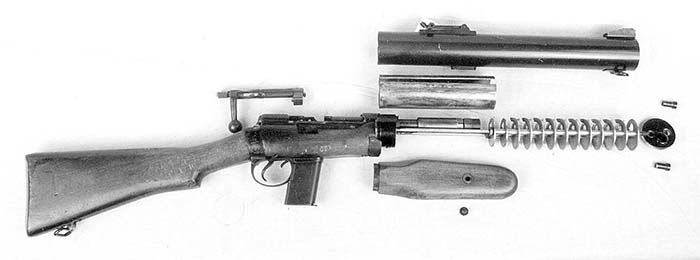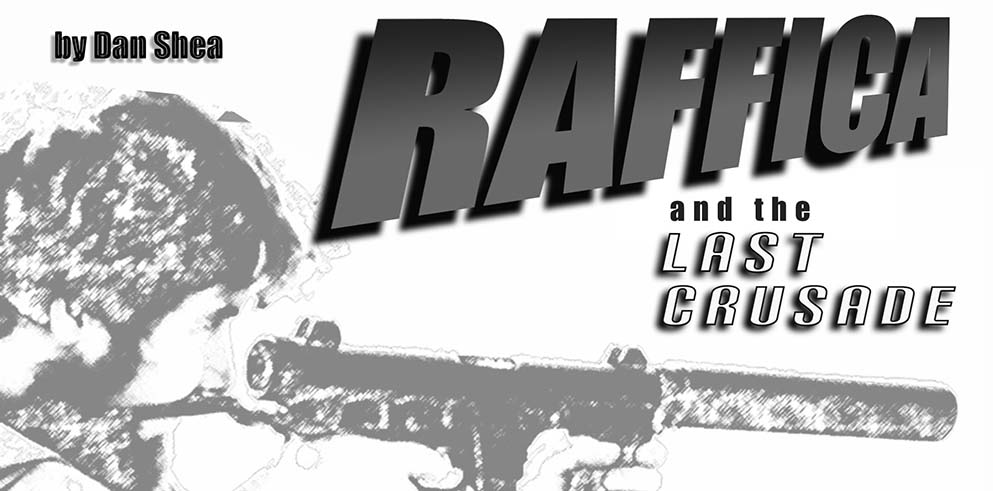By Dan Shea
“Excluding dueling (since it is forbidden in most countries and appears to be declining in favor even in those countries in which it is permitted tacitly or otherwise), there seem to be two primary and quite distinct uses for the pistol. The first of those uses is for target shooting (i.e. deliberate shooting with a view to getting all shots in the ten-ring on a stationary target). Its second use is as a weapon of combat.” – Shooting to Live, Captain William Ewart Fairbairn & Captain Eric Anthony Sykes, 1942
Yes, that Fairbairn & Sykes. The book originated out of their experiences in the Shanghai Municipal Police where Captain Fairbairn was Assistant Commissioner and Captain Sykes was the Officer in Charge of the Snipers Unit. Fascinating book, very down to earth and a good read if you can find a copy. Not really a coffee table book, however, depending on your houseguests. I couldn’t resist bringing their dueling comments to the readers; it is always interesting to see the context of different times. “Declining in favor” indeed. One of my lawyer friends thinks dueling should be brought back for many small claims court cases. I suspect dueling might be beneficial in resolving some of the differences of opinion in the firearms press. We could of course require that the duelers had to use whatever weapon they thought was the best…. This might make for some good field testing and future articles – by the winners.
Onward to the questions
Q – I was reading “Raffica”(Volume 9, Number 1) and saw your mention of the Beretta M57 magazine – where you talked about people converting the San Cristobal magazine to .50 caliber. I don’t have any idea of what either magazine is, but the .50 caliber conversion sounds interesting. I would like more information on this.
A- First of all, there wasn’t a .50 caliber Browning conversion done on these magazines. That would defy the laws of physics. There were a few people who wanted the San Cristobal magazines for .30 caliber carbine conversion mags, as these are very robust and reliable compared to M1 magazines. However, they do not fit into the M1/M2 carbine magazine well. I am not aware of what firearm they were working on. One discussion was using these magazines to convert M16s to .30 carbine, but I never heard any more on that project. The most intriguing discussion was using the San Cristobal magazines for a .50 Action Express conversion of the AR15 rifle. That one caught my attention. I believe 10-12 rounds of .50 AE will fit in the San Cristobal magazine and single stack present the rounds quite nicely.

The San Cristobal carbine is a select fire weapon utilizing two triggers. The influence of the Beretta engineers who worked on the project is evident in that part of the weapon, but the rest is pure Hungarian due to the designer’s background who was Hungarian. The Cristobal M2, as it is correctly called, predated the Beretta M57 by a few years. It appears that the Beretta engineers who worked in the Dominican Republic on the project took some ideas back to Beretta and cross bred the M1 carbine, the Cristobal M2, and the previous Beretta submachine guns and ended up with the Beretta M57.
We had a few thousand of these San Cristobal magazines at LMO in the late 1980s and early 90s. We might even have some left though I didn’t have time to look. I know that Bob Landies at Ohio Ordnance Works had some on the tables at Knob Creek, and Gun Parts Corporation was selling these at one time. John Bush had some as well. These were usually about $25 each.

Model: San Cristobal Carbine
Manufacturer: Dominican Republic
Notes: The marking on floorplate, 896-57, is an individual number, not a lot number. Interestingly, most San Cristobal magazines have unique numbers on them that are unrelated to the weapon serial numbers.
Category: RDS2B (Rifle caliber, Double column, Straight, presents 2 Rounds, Box Magazine)
Caliber: .30 Carbine (7.62x33mm)
Capacity: 30 rounds
OA Length: 7 15/16 inches
Backstrap: 7 15/16 inches
Max. Width: 1.040 inches
Body Width: 0.842 inches
Max. Depth: 1.870 inches
Body Depth: 1.870 inches
Construction: steel
Q –I have read a number of descriptions of the De Lisle carbine, and saw the phrase “Bolt Deadener” written there. However, I have not been able to find any information on this. Is it a new bolt face, or something in the barrel?

A – The integrally suppressed, heavily modified Enfield bolt action rifles known as the “De Lisle Carbines” are the subject of much speculation and interest. Very few were made for World War II Special Operations. Estimates run from the factory-recorded amount of production guns of 130 made, to several hundred total due to much higher serial numbers having been observed. This was, after all, a clandestine weapon and it would make sense for there to be unrecorded numbers produced, which adds to the intrigue. For such a small quantity made, there are certainly enough stories and associated lore. This is a subject deserving much more than just a Raffica question, and SAR will be returning to this with more in-depth articles in the future.
To your precise question, the “Bolt Deadener” is not a new bolt or bolt face, it is simply a wedge of softer material strategically placed in the bolt handle so that when the bolt is closed, there is no noticeable “Click” as the bolt handle contacts the receiver.
Most of the modern replicas have chosen not to do this, in fact I have not seen US replicas with this feature. When someone is operational in the theatre that the De Lisle was designed for, that little “Click” could give away a position and cost the mission as well as the life of the operator.

Q –The subject of the YAK-B that was mentioned in Raffica has me very interested. Your comments that the bolt has rollers and the receiver is a straight tube are interesting. Can you elaborate?

A – Yes, I think we can satisfy your interest with a couple of pictures. For new readers, the YAK-B series is the Russian model that is often mistaken for an M134 Minigun from a distance, or from someone unfamiliar with the M134. It is a very different mechanism.
The receiver is a straight tube, and the cam tracks are not cast and milled in like the ones in the complex US gun’s receiver. The cam tracks are bolted into place and are removable for replacement. The bolts have rollers that enable the smooth operation of the gun.

(Photo by Dan Shea, Courtesy MOD Pattern Room)
Send questions to:
Rafficasareview@aol.com
Or mail to Small Arms Review
Attn Raffica
631 N. Stephanie St #562
Henderson, NV 89014
| This article first appeared in Small Arms Review V9N3 (December 2005) |











